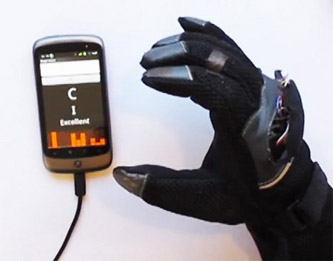Handwriting Has Been Redefined

The University of California, San Diego has developed an interesting new piece of technology; a glove which utilises sensors in order to convert sign language (ASL) into text on a screen, be it a computer or smartphone.
It’s not the first of its, however, it is cheaper and far more portable than any sign language translator on the market today. As a result, this new glove is looking to reform how we translate sign language.
Sign language is very useful for deaf or severely hearing impaired people, although, it has its limitations in that a very small portion of the population actually knows it.
This is the main reason why this technology could be life-changing for many people. Those who have been deaf since birth find that it is difficult to learn the English language, as they do not have the relevant sounds to match the writing, so for many, sign language is their only language. Technology like this opens them up to the rest of the world.
How It Works:
The device, in its most rudimental form, is no more than a pair of sports gloves. However, nine very flexible strain sensors are positioned across various knuckles. When the user flexes or bends any of their fingers of thumbs; the glove knows about it. Inner-working software then receives the electrical input of the sensors and calculates the exact configuration of the hand. This doesn’t narrow down different gestures enough though, as certain words are the same gestures, only with different motions. As a result, each glove is fitted with motion sensors on the back of the palm.

Examples of two very similar letters include Z and G. Both involve flexing the index finger, however, with G, the finger is flat, and the Z the finger is upright. The motion sensors will help differentiate these configurations.
In terms of how the information is displayed, the glove features Bluetooth connectivity; allowing the user to stream the data to either a mobile phone or a compatible display screen.
Timothy O’Connor, one of the professionals working on the device at the University of California, says the idea behind the glove is that the strain sensors are so flexible that the user will hardly notice that they are wearing the glove.
New Possibilities!
Though originally intended for use by sign language users, the glove has several other useful applications. Being able to convert hand configurations into electrical signals will allow people to control various electronics using only their hands. This could be useful to control robotics or even basic things such as controlling household appliances including televisions or central heating systems.

















